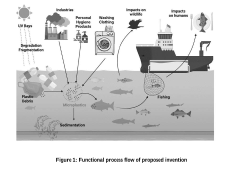Biodegradable Plastics Enhance Clean Air Initiatives
MAY 15, 20259 MIN READ
Generate Your Research Report Instantly with AI Agent
Patsnap Eureka helps you evaluate technical feasibility & market potential.
Biodegradable Plastics Evolution and Objectives
Biodegradable plastics have emerged as a promising solution to address the global plastic pollution crisis while simultaneously contributing to clean air initiatives. The evolution of these materials can be traced back to the 1980s when the first biodegradable polymers were developed. Since then, significant advancements have been made in the field, driven by increasing environmental concerns and regulatory pressures.
The primary objective of biodegradable plastics research in the context of clean air initiatives is to develop materials that not only decompose naturally in the environment but also contribute to reducing air pollution. This dual-purpose approach aims to tackle two critical environmental challenges simultaneously: plastic waste accumulation and air quality degradation.
Over the past four decades, the biodegradable plastics industry has witnessed several key milestones. The introduction of polylactic acid (PLA) in the 1990s marked a significant breakthrough, offering a corn-based alternative to traditional petroleum-derived plastics. Subsequently, the development of polyhydroxyalkanoates (PHAs) in the early 2000s expanded the range of biodegradable options, providing materials with diverse properties suitable for various applications.
Recent technological advancements have focused on enhancing the biodegradability of these materials while improving their mechanical properties and durability during use. Researchers are exploring novel blends and composites that incorporate natural fibers, nanoparticles, and other additives to optimize performance and degradation characteristics.
The current objectives in biodegradable plastics research aligned with clean air initiatives include developing materials that actively capture air pollutants during their lifecycle, creating plastics that degrade into beneficial soil nutrients, and designing packaging solutions that minimize the carbon footprint of product transportation and storage.
Furthermore, there is a growing emphasis on integrating biodegradable plastics into circular economy models. This involves creating closed-loop systems where these materials can be efficiently collected, composted, and reintegrated into the production cycle, minimizing waste and reducing the overall environmental impact.
As the field continues to evolve, researchers are also exploring the potential of biodegradable plastics to serve as carriers for air-purifying agents or to act as substrates for air-cleaning microorganisms. These innovative approaches aim to transform plastic products from passive environmental burdens into active contributors to air quality improvement.
The primary objective of biodegradable plastics research in the context of clean air initiatives is to develop materials that not only decompose naturally in the environment but also contribute to reducing air pollution. This dual-purpose approach aims to tackle two critical environmental challenges simultaneously: plastic waste accumulation and air quality degradation.
Over the past four decades, the biodegradable plastics industry has witnessed several key milestones. The introduction of polylactic acid (PLA) in the 1990s marked a significant breakthrough, offering a corn-based alternative to traditional petroleum-derived plastics. Subsequently, the development of polyhydroxyalkanoates (PHAs) in the early 2000s expanded the range of biodegradable options, providing materials with diverse properties suitable for various applications.
Recent technological advancements have focused on enhancing the biodegradability of these materials while improving their mechanical properties and durability during use. Researchers are exploring novel blends and composites that incorporate natural fibers, nanoparticles, and other additives to optimize performance and degradation characteristics.
The current objectives in biodegradable plastics research aligned with clean air initiatives include developing materials that actively capture air pollutants during their lifecycle, creating plastics that degrade into beneficial soil nutrients, and designing packaging solutions that minimize the carbon footprint of product transportation and storage.
Furthermore, there is a growing emphasis on integrating biodegradable plastics into circular economy models. This involves creating closed-loop systems where these materials can be efficiently collected, composted, and reintegrated into the production cycle, minimizing waste and reducing the overall environmental impact.
As the field continues to evolve, researchers are also exploring the potential of biodegradable plastics to serve as carriers for air-purifying agents or to act as substrates for air-cleaning microorganisms. These innovative approaches aim to transform plastic products from passive environmental burdens into active contributors to air quality improvement.
Clean Air Market Demand Analysis
The demand for clean air solutions has been steadily increasing in recent years, driven by growing awareness of air pollution's impact on health and the environment. This trend has created a significant market opportunity for innovative technologies that can contribute to air quality improvement. Biodegradable plastics have emerged as a potential solution to address both plastic pollution and air quality concerns simultaneously.
Market research indicates that the global clean air market is expected to grow substantially over the next decade. This growth is fueled by stringent environmental regulations, increasing urbanization, and rising public health concerns. Governments worldwide are implementing stricter air quality standards, creating a strong demand for technologies that can help meet these targets. In this context, biodegradable plastics offer a unique value proposition by reducing plastic waste and potentially contributing to air purification.
The industrial sector, particularly manufacturing and construction, represents a significant portion of the clean air market demand. These industries are under pressure to reduce their environmental footprint and are actively seeking sustainable materials that can help improve air quality. Biodegradable plastics that incorporate air-purifying properties could find substantial applications in this sector, ranging from building materials to packaging solutions.
Consumer demand for eco-friendly products is also driving the market for clean air initiatives. There is a growing preference for products that not only minimize environmental impact but also actively contribute to environmental improvement. Biodegradable plastics with air-purifying capabilities could tap into this consumer sentiment, potentially creating new product categories in personal care, home goods, and automotive industries.
The healthcare sector presents another significant market opportunity for biodegradable plastics in clean air initiatives. With increased focus on indoor air quality in hospitals and other healthcare facilities, there is a demand for materials that can help maintain sterile environments while also contributing to air purification. Biodegradable plastics with antimicrobial and air-cleaning properties could find applications in medical devices, packaging, and healthcare facility infrastructure.
Urban planning and smart city initiatives are also driving demand for clean air solutions. As cities worldwide strive to improve livability and sustainability, there is a growing interest in materials and technologies that can be integrated into urban infrastructure to enhance air quality. Biodegradable plastics could potentially be used in urban furniture, public transportation infrastructure, and green building materials, contributing to overall air quality improvement in urban environments.
Market research indicates that the global clean air market is expected to grow substantially over the next decade. This growth is fueled by stringent environmental regulations, increasing urbanization, and rising public health concerns. Governments worldwide are implementing stricter air quality standards, creating a strong demand for technologies that can help meet these targets. In this context, biodegradable plastics offer a unique value proposition by reducing plastic waste and potentially contributing to air purification.
The industrial sector, particularly manufacturing and construction, represents a significant portion of the clean air market demand. These industries are under pressure to reduce their environmental footprint and are actively seeking sustainable materials that can help improve air quality. Biodegradable plastics that incorporate air-purifying properties could find substantial applications in this sector, ranging from building materials to packaging solutions.
Consumer demand for eco-friendly products is also driving the market for clean air initiatives. There is a growing preference for products that not only minimize environmental impact but also actively contribute to environmental improvement. Biodegradable plastics with air-purifying capabilities could tap into this consumer sentiment, potentially creating new product categories in personal care, home goods, and automotive industries.
The healthcare sector presents another significant market opportunity for biodegradable plastics in clean air initiatives. With increased focus on indoor air quality in hospitals and other healthcare facilities, there is a demand for materials that can help maintain sterile environments while also contributing to air purification. Biodegradable plastics with antimicrobial and air-cleaning properties could find applications in medical devices, packaging, and healthcare facility infrastructure.
Urban planning and smart city initiatives are also driving demand for clean air solutions. As cities worldwide strive to improve livability and sustainability, there is a growing interest in materials and technologies that can be integrated into urban infrastructure to enhance air quality. Biodegradable plastics could potentially be used in urban furniture, public transportation infrastructure, and green building materials, contributing to overall air quality improvement in urban environments.
Current Biodegradable Plastics Technology Status
Biodegradable plastics have emerged as a promising solution to address environmental concerns, particularly in the context of clean air initiatives. The current technology status of biodegradable plastics is characterized by significant advancements in material science and polymer engineering, yet challenges remain in achieving widespread adoption and optimal performance.
One of the primary biodegradable plastic materials in use today is polylactic acid (PLA), derived from renewable resources such as corn starch or sugarcane. PLA has gained traction in various applications, including packaging and disposable items, due to its ability to decompose under specific conditions. However, its degradation process often requires industrial composting facilities, limiting its effectiveness in natural environments.
Another notable biodegradable plastic is polyhydroxyalkanoates (PHAs), which are produced by microorganisms. PHAs offer the advantage of being both biodegradable and biocompatible, making them suitable for medical applications and environmentally sensitive products. The production of PHAs, however, remains relatively costly compared to conventional plastics, hindering their widespread adoption.
Starch-based biodegradable plastics have also made significant strides in recent years. These materials, often blended with other biodegradable polymers, offer improved mechanical properties and versatility. They have found applications in agriculture, packaging, and consumer goods, contributing to reduced plastic pollution and improved air quality through decreased incineration of non-biodegradable plastics.
Recent technological advancements have focused on enhancing the degradation rates and mechanical properties of biodegradable plastics. Researchers have explored the use of nanocomposites and additives to improve strength, flexibility, and barrier properties while maintaining biodegradability. These innovations aim to address the limitations of early biodegradable plastics, which often suffered from poor durability and limited shelf life.
The integration of biodegradable plastics with clean air initiatives has led to the development of materials that not only decompose harmlessly but also actively contribute to air purification. Some cutting-edge research involves incorporating air-purifying compounds or photocatalytic materials into biodegradable plastics, enabling them to capture pollutants or break down harmful substances in the atmosphere during their useful life.
Despite these advancements, challenges persist in the widespread adoption of biodegradable plastics. Issues such as higher production costs, limited processing capabilities, and the need for specialized disposal infrastructure continue to hinder their market penetration. Additionally, concerns about the potential release of microplastics during degradation and the energy-intensive production processes of some biodegradable materials require further research and technological improvements.
In conclusion, the current status of biodegradable plastics technology reflects a rapidly evolving field with significant potential to enhance clean air initiatives. While innovative materials and production methods have expanded the possibilities for environmentally friendly plastics, ongoing research and development efforts are crucial to overcome existing limitations and fully realize the potential of biodegradable plastics in promoting cleaner air and a more sustainable environment.
One of the primary biodegradable plastic materials in use today is polylactic acid (PLA), derived from renewable resources such as corn starch or sugarcane. PLA has gained traction in various applications, including packaging and disposable items, due to its ability to decompose under specific conditions. However, its degradation process often requires industrial composting facilities, limiting its effectiveness in natural environments.
Another notable biodegradable plastic is polyhydroxyalkanoates (PHAs), which are produced by microorganisms. PHAs offer the advantage of being both biodegradable and biocompatible, making them suitable for medical applications and environmentally sensitive products. The production of PHAs, however, remains relatively costly compared to conventional plastics, hindering their widespread adoption.
Starch-based biodegradable plastics have also made significant strides in recent years. These materials, often blended with other biodegradable polymers, offer improved mechanical properties and versatility. They have found applications in agriculture, packaging, and consumer goods, contributing to reduced plastic pollution and improved air quality through decreased incineration of non-biodegradable plastics.
Recent technological advancements have focused on enhancing the degradation rates and mechanical properties of biodegradable plastics. Researchers have explored the use of nanocomposites and additives to improve strength, flexibility, and barrier properties while maintaining biodegradability. These innovations aim to address the limitations of early biodegradable plastics, which often suffered from poor durability and limited shelf life.
The integration of biodegradable plastics with clean air initiatives has led to the development of materials that not only decompose harmlessly but also actively contribute to air purification. Some cutting-edge research involves incorporating air-purifying compounds or photocatalytic materials into biodegradable plastics, enabling them to capture pollutants or break down harmful substances in the atmosphere during their useful life.
Despite these advancements, challenges persist in the widespread adoption of biodegradable plastics. Issues such as higher production costs, limited processing capabilities, and the need for specialized disposal infrastructure continue to hinder their market penetration. Additionally, concerns about the potential release of microplastics during degradation and the energy-intensive production processes of some biodegradable materials require further research and technological improvements.
In conclusion, the current status of biodegradable plastics technology reflects a rapidly evolving field with significant potential to enhance clean air initiatives. While innovative materials and production methods have expanded the possibilities for environmentally friendly plastics, ongoing research and development efforts are crucial to overcome existing limitations and fully realize the potential of biodegradable plastics in promoting cleaner air and a more sustainable environment.
Existing Biodegradable Plastics Solutions
01 Biodegradable plastics for air purification
Development of biodegradable plastics with air purification properties. These materials can absorb pollutants and harmful gases from the air while naturally decomposing over time, contributing to both waste reduction and air quality improvement.- Biodegradable plastics for air purification: Development of biodegradable plastics that can actively purify air by incorporating air-cleaning properties. These materials can absorb or neutralize pollutants, contributing to improved air quality while decomposing naturally over time.
- Biodegradable packaging with air-cleaning additives: Creation of biodegradable packaging materials enhanced with additives that can trap or break down airborne contaminants. These packaging solutions offer dual benefits of reducing plastic waste and improving air quality in storage or transportation environments.
- Air-purifying biodegradable filters: Development of biodegradable filter materials that can effectively remove air pollutants. These filters can be used in various applications, from personal protective equipment to industrial air cleaning systems, offering an environmentally friendly alternative to traditional filters.
- Biodegradable plastics with enhanced decomposition properties: Innovation in biodegradable plastic formulations that accelerate decomposition while minimizing harmful byproducts. These advanced materials ensure faster breakdown in various environments, reducing long-term environmental impact and potential air pollution from degradation processes.
- Integration of air-cleaning nanoparticles in biodegradable plastics: Incorporation of air-purifying nanoparticles into biodegradable plastic matrices. These nanocomposites can actively clean the air through photocatalytic or adsorption processes while maintaining the biodegradability of the base material.
02 Biodegradable plastic filters for air cleaning systems
Creation of air filtration systems using biodegradable plastic materials. These filters can effectively remove particulate matter and other contaminants from the air, and can be safely disposed of or composted after use, reducing environmental impact.Expand Specific Solutions03 Incorporation of air-purifying additives in biodegradable plastics
Integration of specific additives into biodegradable plastic formulations to enhance their air-cleaning capabilities. These additives can include catalysts, adsorbents, or reactive compounds that actively remove pollutants from the surrounding air.Expand Specific Solutions04 Biodegradable plastics with controlled release of air-purifying agents
Development of biodegradable plastic materials that gradually release air-purifying substances over time. This approach allows for sustained air cleaning effects while the plastic naturally decomposes, providing long-term environmental benefits.Expand Specific Solutions05 Composite materials combining biodegradable plastics and natural air purifiers
Creation of composite materials that blend biodegradable plastics with natural air-purifying substances such as activated carbon or zeolites. These composites can offer enhanced air cleaning properties while maintaining biodegradability.Expand Specific Solutions
Key Players in Biodegradable Plastics Industry
The research on biodegradable plastics enhancing clean air initiatives is in a growth phase, with increasing market size and technological advancements. The global biodegradable plastics market is expanding rapidly, driven by environmental concerns and regulatory pressures. Companies like Kaneka Corp., Toray Industries, Inc., and DSM IP Assets BV are at the forefront of developing innovative biodegradable materials. The technology's maturity varies, with some firms like Stratasys, Inc. and OCV Intellectual Capital LLC focusing on advanced manufacturing processes. Emerging players such as MarinaTex Ltd. and Zhejiang Sci-Tech University are contributing to the field's diversification, while established entities like BASF AB continue to invest in research and development, indicating a competitive and evolving landscape.
Kaneka Corp.
Technical Solution: Kaneka Corp. has developed a biodegradable plastic called PHBH, which is produced through microbial fermentation using plant oils. This biopolymer is fully biodegradable in various environments, including marine conditions. In the context of clean air initiatives, PHBH production has a lower carbon footprint compared to traditional plastics, as it uses renewable resources and captures CO2 during the plant growth phase. The company has also invested in improving the material's properties, such as heat resistance and flexibility, to make it suitable for a wide range of applications, from packaging to agricultural films.
Strengths: Fully biodegradable, marine degradable, renewable resource-based, lower carbon footprint. Weaknesses: Higher production costs, limited production capacity compared to conventional plastics.
Toray Industries, Inc.
Technical Solution: Toray Industries has developed a range of biodegradable plastics, including Ecodear PLA (polylactic acid) and Ecodear PBS (polybutylene succinate). These materials are derived from renewable resources such as corn and sugarcane. In relation to clean air initiatives, Toray's biodegradable plastics contribute by reducing the reliance on fossil fuel-based plastics and lowering greenhouse gas emissions during production. The company has also focused on enhancing the materials' properties, such as heat resistance and durability, to expand their application in various industries. Toray has implemented a lifecycle assessment approach to ensure that their biodegradable plastics contribute positively to air quality throughout their entire lifecycle.
Strengths: Wide range of biodegradable options, improved material properties, lifecycle assessment approach. Weaknesses: Dependency on agricultural resources, potential competition with food crops.
Core Innovations in Biodegradable Materials
Analysis and development of BIO-plastic from algal biomass for composites
PatentPendingIN201641037330A
Innovation
- The production of biodegradable plastics from algal rejects of Kappaphycus alvarezii, enhanced with starch, glycerol, sorbitol, and coconut shell powder, which provides high tensile strength and expandability, making them suitable for automotive parts, gaskets, and wire insulation, while being resistant to rodent and fungal attacks.
Biodegradable plastic material with enhanced environmental compatibility for marine life protection
PatentPendingIN202411030059A
Innovation
- Development of biodegradable plastic materials optimized for marine environments through advanced biopolymer synthesis and degradation kinetics, ensuring efficient degradation into harmless compounds without microplastic formation, leveraging renewable resources and additive technologies, and emphasizing life cycle thinking and holistic approaches.
Environmental Impact Assessment
The environmental impact assessment of biodegradable plastics in relation to clean air initiatives reveals a complex interplay of benefits and potential drawbacks. Biodegradable plastics offer a promising solution to reduce plastic pollution, which indirectly contributes to air quality improvement. As these materials break down naturally, they reduce the need for incineration of plastic waste, a process that releases harmful pollutants into the atmosphere.
However, the production of biodegradable plastics may have its own environmental footprint. The cultivation of crops for bio-based plastics can lead to increased land use, potentially resulting in deforestation and loss of biodiversity. This, in turn, could negatively impact air quality by reducing natural carbon sinks. Additionally, the manufacturing process of biodegradable plastics may still involve energy-intensive steps, contributing to greenhouse gas emissions.
On the positive side, biodegradable plastics can significantly reduce microplastic pollution in the environment. Microplastics have been found to be airborne and can potentially affect air quality and human health through inhalation. By using materials that naturally decompose, the long-term presence of microplastics in the environment can be mitigated.
The end-of-life management of biodegradable plastics also plays a crucial role in their environmental impact. Proper composting facilities are essential to ensure these materials break down efficiently without releasing methane, a potent greenhouse gas. When managed correctly, biodegradable plastics can contribute to a circular economy, reducing overall waste and associated air pollution from waste management processes.
It is important to consider the lifecycle analysis of biodegradable plastics compared to conventional plastics. While they may offer benefits in terms of reduced persistence in the environment, the energy and resources required for their production and disposal must be carefully evaluated. The net impact on air quality should be assessed holistically, taking into account factors such as transportation, manufacturing emissions, and end-of-life treatment.
Research indicates that the adoption of biodegradable plastics could lead to a reduction in the overall carbon footprint of plastic use, particularly when derived from sustainable feedstocks and processed using renewable energy sources. This aligns with clean air initiatives by potentially lowering the emission of carbon dioxide and other air pollutants associated with the plastic industry.
However, the production of biodegradable plastics may have its own environmental footprint. The cultivation of crops for bio-based plastics can lead to increased land use, potentially resulting in deforestation and loss of biodiversity. This, in turn, could negatively impact air quality by reducing natural carbon sinks. Additionally, the manufacturing process of biodegradable plastics may still involve energy-intensive steps, contributing to greenhouse gas emissions.
On the positive side, biodegradable plastics can significantly reduce microplastic pollution in the environment. Microplastics have been found to be airborne and can potentially affect air quality and human health through inhalation. By using materials that naturally decompose, the long-term presence of microplastics in the environment can be mitigated.
The end-of-life management of biodegradable plastics also plays a crucial role in their environmental impact. Proper composting facilities are essential to ensure these materials break down efficiently without releasing methane, a potent greenhouse gas. When managed correctly, biodegradable plastics can contribute to a circular economy, reducing overall waste and associated air pollution from waste management processes.
It is important to consider the lifecycle analysis of biodegradable plastics compared to conventional plastics. While they may offer benefits in terms of reduced persistence in the environment, the energy and resources required for their production and disposal must be carefully evaluated. The net impact on air quality should be assessed holistically, taking into account factors such as transportation, manufacturing emissions, and end-of-life treatment.
Research indicates that the adoption of biodegradable plastics could lead to a reduction in the overall carbon footprint of plastic use, particularly when derived from sustainable feedstocks and processed using renewable energy sources. This aligns with clean air initiatives by potentially lowering the emission of carbon dioxide and other air pollutants associated with the plastic industry.
Policy and Regulatory Framework
The policy and regulatory framework surrounding biodegradable plastics and clean air initiatives is evolving rapidly as governments and international organizations recognize the interconnected nature of plastic pollution and air quality. Many countries have implemented or are considering policies that promote the use of biodegradable plastics as part of broader environmental protection strategies.
In the European Union, the Single-Use Plastics Directive has set ambitious targets for reducing plastic waste, including promoting alternatives such as biodegradable plastics. This directive is complemented by the EU's Circular Economy Action Plan, which emphasizes the importance of sustainable materials in reducing overall environmental impact.
The United States has taken a more fragmented approach, with individual states leading the way in biodegradable plastics regulation. California, for instance, has enacted strict laws on plastic bag use and is exploring policies to incentivize biodegradable alternatives. At the federal level, the EPA is considering revisions to the Clean Air Act to address microplastic pollution in the atmosphere.
In Asia, countries like Japan and South Korea have implemented comprehensive plastic management strategies that include support for biodegradable plastics research and development. China's ban on certain single-use plastics has created a significant market opportunity for biodegradable alternatives, driving innovation in this sector.
International agreements, such as the Basel Convention on plastic waste, are also shaping the regulatory landscape for biodegradable plastics. These agreements are increasingly recognizing the role of innovative materials in addressing global environmental challenges.
Many governments are introducing tax incentives and research grants to accelerate the development and adoption of biodegradable plastics. These financial instruments are often tied to demonstrable improvements in air quality and overall environmental impact, creating a direct link between biodegradable plastics and clean air initiatives.
Standardization bodies are working to develop uniform testing and certification processes for biodegradable plastics. These standards are crucial for ensuring that products marketed as biodegradable truly break down in various environmental conditions without releasing harmful substances into the air or soil.
As the connection between plastic pollution and air quality becomes more apparent, policymakers are increasingly integrating biodegradable plastics into broader environmental protection frameworks. This holistic approach recognizes that addressing plastic pollution can have cascading benefits for air quality, ecosystem health, and climate change mitigation.
In the European Union, the Single-Use Plastics Directive has set ambitious targets for reducing plastic waste, including promoting alternatives such as biodegradable plastics. This directive is complemented by the EU's Circular Economy Action Plan, which emphasizes the importance of sustainable materials in reducing overall environmental impact.
The United States has taken a more fragmented approach, with individual states leading the way in biodegradable plastics regulation. California, for instance, has enacted strict laws on plastic bag use and is exploring policies to incentivize biodegradable alternatives. At the federal level, the EPA is considering revisions to the Clean Air Act to address microplastic pollution in the atmosphere.
In Asia, countries like Japan and South Korea have implemented comprehensive plastic management strategies that include support for biodegradable plastics research and development. China's ban on certain single-use plastics has created a significant market opportunity for biodegradable alternatives, driving innovation in this sector.
International agreements, such as the Basel Convention on plastic waste, are also shaping the regulatory landscape for biodegradable plastics. These agreements are increasingly recognizing the role of innovative materials in addressing global environmental challenges.
Many governments are introducing tax incentives and research grants to accelerate the development and adoption of biodegradable plastics. These financial instruments are often tied to demonstrable improvements in air quality and overall environmental impact, creating a direct link between biodegradable plastics and clean air initiatives.
Standardization bodies are working to develop uniform testing and certification processes for biodegradable plastics. These standards are crucial for ensuring that products marketed as biodegradable truly break down in various environmental conditions without releasing harmful substances into the air or soil.
As the connection between plastic pollution and air quality becomes more apparent, policymakers are increasingly integrating biodegradable plastics into broader environmental protection frameworks. This holistic approach recognizes that addressing plastic pollution can have cascading benefits for air quality, ecosystem health, and climate change mitigation.
Unlock deeper insights with Patsnap Eureka Quick Research — get a full tech report to explore trends and direct your research. Try now!
Generate Your Research Report Instantly with AI Agent
Supercharge your innovation with Patsnap Eureka AI Agent Platform!




